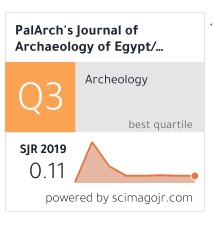LEVERAGE BAMBOOZLING: AN EMPIRICAL STUDY OF FERTILISER INDUSTRY OF INDIA
Abstract
The present empirical paper studies the leverage bamboozling in fertilizer industry of the Indian corporate sector which covers a time period of ten years extending from the year 1982-83 to 1991-92, by selecting top eight companies from the list published by Business Standard Research Bureau, Calcutta of the Indian corporate sector by dropping diversified companies and companies for which data is not available, on the basis of sales for the year 1991-92 for the purpose of our study. The study reveals that that debt-equity ratio2 has been varying from 49.15 percent in the 1984-85 to 70.31 percent in the year 1987-88 while leverage ratio2 has been varying from 49.75 percent in the 1984-85 to 70.62 percent in the year 1987-88 during the period under study, whereas, aggregate debt-equity ratio2 and aggregate leverage ratio2 of this industry are worked out 61.66 percent and 62.29 percent respectively during the period under study. It is found that aggregate cost of debt (Kdbt & Kdat) on before and after tax basis of the industry is worked out 10.33 percent and 8.37 percent, respectively, during the period under study. It is observed that rate of return on net assets (ROIbt2 & ROIat2) and rate of return on total networth (RONbt & RONat) on before and after tax basis have been declining during the period under study. On aggregate basis, aggregate rate of return on net assets (ROIbt2 & ROIat2) on before and after tax basis is worked out 11.44 percent and 9.27 percent, whereas, aggregate rate of return on total networth (RONbt & RONat) on before and after tax basis is worked out 13.07 percent and 10.59 percent, respectively, during the study period. Thus, it is concluded that the industry is enjoying favourable leverage with regard to use of debt during seven out of ten years under study. Consequently, rate of return on total networth (RONbt & RONat) is higher than cost of debt (Kdbt & Kdat) and rate of return on net assets (ROIbt2 & ROIat2) on before and after tax basis in the above said seven years under study. It means that use of debt in the capital structure of the companies has positive impact on the profitability of the company during seven out of ten years under study which consequently is contributing to the total networth of the companies which ultimately is benefitting to the equity shareholders of the companies under this industry. Leverage created through debt is not generating risk for the companies in the above said seven years under study because the companies under this industry are able to cover the cost of debt (Kdbt & Kdat) on before and after tax basis from the rate of return on net assets (ROIbt2 & ROIat2) on before and after tax basis in the above said seven years under study. However, on aggregate basis, the industry has also been experiencing favourable leverage with regard to use of debt on before and after tax basis during the period under study which further means that debt is behaving favourably during the period under study. It is also found that spread and net gain are positive when leverage impact is positive and vice-versa during the period under study. It is also found that effective tax rate born by this industry is not high, i.e. 19 percent, during the period under study.



